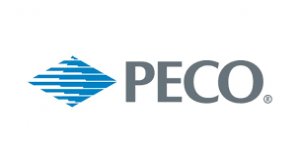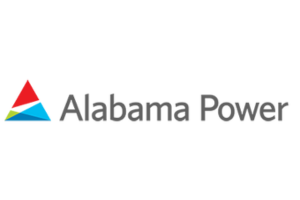Community Partnership Award
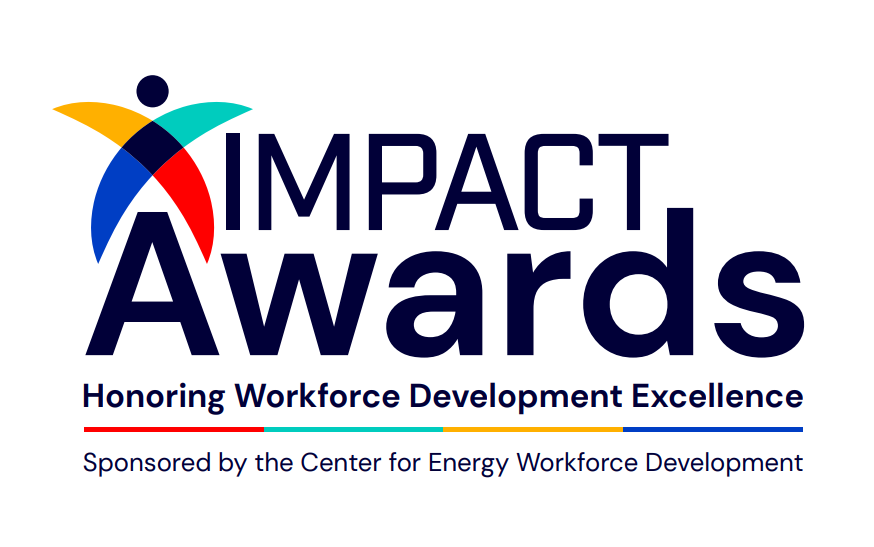
This award recognizes a company for developing unique connections within the local community – with educators, minority facing organizations, workforce systems, or other groups – that have yielded demonstrated results in fueling the talent pipeline. This award was created to recognize the vital role community partnerships play in the advancement of the CEWD mission to ensure our workforce represents the diverse communities we serve.
Entries will be evaluated on creativity, collaboration, and innovation in developing new outreach to attract and engage diverse candidate interests. Evidence of the impact of ongoing educational and partnerships employment opportunities to potential workforce candidates is essential.
Past Community Partnership Award Winners
2024 Community Partnership Award
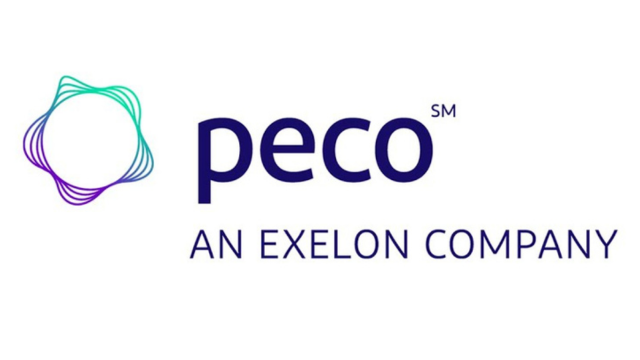
2023 Community Partnership Award
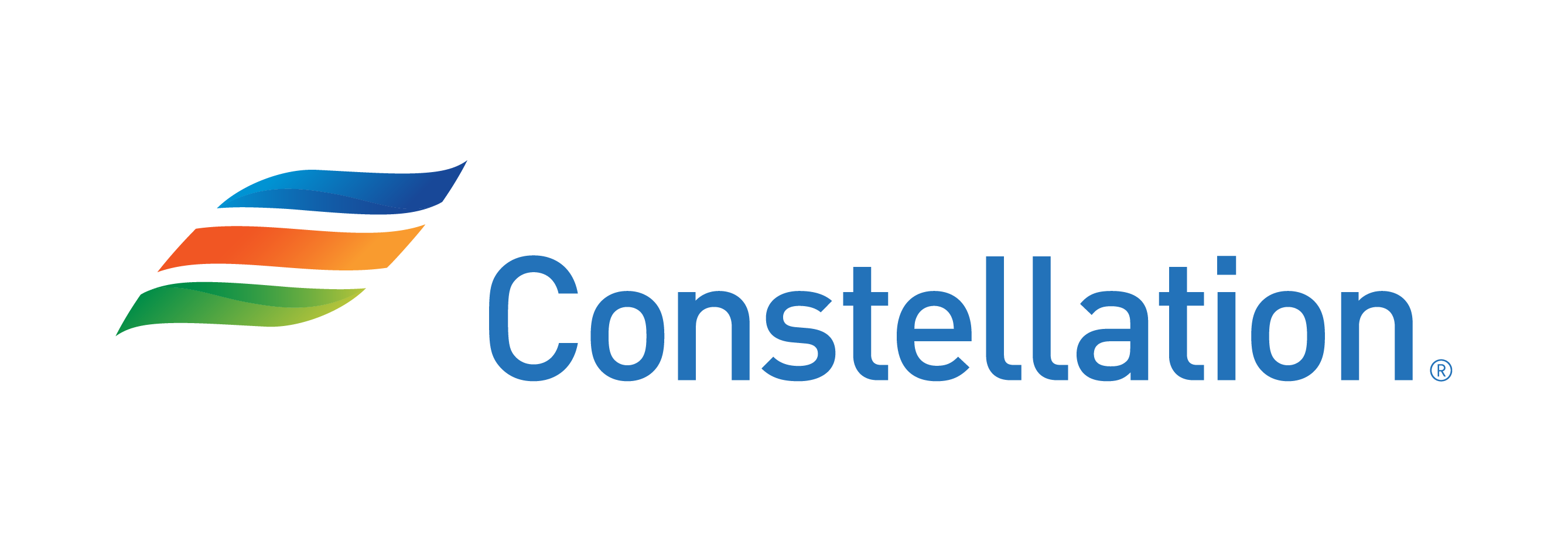
2022 Community Partnership Award
It Takes a Community to Drive Change
Obtaining input and growing relationships can be time-consuming and challenging for both energy companies and their communities, but it’s a necessary step in growing diverse workforces and ensuring community needs are met.
The organizations that won the Center for Energy Workforce Development’s 2022 Impact Awards for Community Partnership have all identified historically underserved communities and invited community members and representatives into the conversation to find the best ways to foster talent and create more diverse workforces that better represent their customer bases.
They are creating culturally accessible engagement strategies, partnering with communities to design and deliver programs, and are tracking and documenting their progress to ensure success. These five energy companies prove that engaging community voices can make a big difference in the lives of their employees, in their business performance and in the betterment of their communities.
Click the company logos below to read more
2022 Community Partnership Award Winners

True Partnerships Are What It’s All About
Alabama Power’s efforts are guided through the lens of the motto: “What’s good for Alabama is good for Alabama Power.” One way the company defines this idea is by focusing on economic empowerment through quality employment.
“We focus on serving our internal customers’ workforce needs, the workforce needs of our external customers, and being actively engaged in local, regional and state workforce alliances and boards to impact the most people,” explains Tom McNeal, Alabama Power workforce development manager.
For Alabama Power, entry-level lineworker opportunities, particularly the utility assistant, are critical roles to fill, so continual awareness of these career opportunities is key. To tap into talent, the company built community-based partnerships to fuel consistent, skilled and diverse talent pipelines.
Partnership with the Alabama Community College led to the development of the Pre-Apprentice Lineworker Program at four schools (three of which are HBCUs – historically black colleges and universities): Bishop State Community College, Jefferson State Community College, Lawson State Community College and Trenholm State Community College. The 10-week program teaches students to set and climb poles, install hardware and power lines, use tools and equipment of the trade through field experience, electric theory and practice, safety, teamwork, and interpersonal skills. Before completing the program, students earn their commercial driver’s license, OSHA 10 card and CPR/First Aid certification.
Since 2020, the program has graduated a total of 211 students and placed 207 from 16 classes at one of over 20 utility partners for a placement rate of 98 percent. Classes have included a diverse mix of students, with 45 percent diversity composition. To tap into diverse candidates, scholarships and WIOA funding provide financial assistance for the Pre-Apprentice Lineworker Program. Over the past two years, Alabama Power has provided minority scholarships for 26 students that totaled approximately $110,000.
“The greatest impact to our workforce efforts happens when we partner together and build an ecosystem that puts people to work,” McNeal says. “Your reputation in the community drives quality recruitment, which they hear from those who work at the company and their interaction with the company. Every day electric utilities have thousands of opportunities to provide positive or negative experiences.”
Helping communities grow and thrive is one of Alabama Power’s primary objectives. “Community involvement should be at the core of what energy companies do,” McNeal explains. “Through this we have a great opportunity to plant seeds and educate people on what types of careers we hire for, what they entail, and what training, education or experience they need to compete for them. ‘People cannot be what they cannot see’ or ‘people cannot aspire to a career they don’t know exists’ are popular sayings. Having resources assigned to help people see our careers is key. Most of that payoff will occur middle to long term, but I can assure you that other industries are engaged in this, and if you sit on the sidelines, they will have the advantage.”
Being a Center for Energy Workforce Development Community Partnership Award winner “reminds us of the hard work it takes to make these programs happen,” McNeal says, “and encourages us to be better each day to impact more lives and our company for the better.”

Collaboration is the Name of the Game at ComEd
In Illinois, ComEd’s goal is to build a robust pipeline of talent that ensures construction crews and ComEd teams working in the field reflect the very diversity and strength that makes its local communities great.
One way it chases this goal is through the CONSTRUCT Infrastructure Academy, which it started in 2013. The 11-week training program prepares local, diverse job seekers for entry-level careers in energy, construction and related sectors. ComEd oversees the program, bringing in over 40 companies to assist with the training, which includes NCCER curriculum, introduction in estimating, project management techniques, energy efficiency and beneficial electrification, as well as job shadowing to showcase office and field positions. Along with the support of 10 non-profit agencies, the program incorporates best practices like financial management, social and emotional support and math training in preparation for various union and CAST testing.
Program participants receive $1,500 stipends to support basic needs, and graduates are eligible for scholarships at Dawson Technical Institute’s Overhead Electrical Line Worker Training.
“This program was designed to create a pipeline to ensure these industries were reflective of the communities they serve,” explains Laticia Holbert, workforce development manager, ComEd, adding that in 2022 the program gradated 68 participants – 45 percent women, 96 percent people of color – and realized a 70-percent employment rate. In the past decade, it’s had more than 700 participants – 96 percent people of color and 30 percent women – and a placement rate of more than 70 percent.
The company also started its CONSTRUCT Business Operations Academy in October 2021 to help participants hone their administrative, project management and customer service skills in the utility industry. The program offers six weeks of training, and participants receive a $1,000 stipend for their participation. The CONSTRUCT Business Operations Academy has graduated eight participants, which were 100 percent women, and has an 80-percent employment rate.
Another program ComEd offers is the Craft Academy, which graduated its first class in August 2022 and is designed to prepare candidates for entry-level construction and overhead construction positions within ComEd. The three-week program provided advanced training for craft roles. Participants receive an $800 stipend for participation in the program, as well as education in math and interview skills and CAST test preparation. The inaugural program graduated nine participants, which were 96 percent people of color, and had a 100-percent employment rate.
“This means we are successfully putting people to work in this industry,” Holbert says.
ComEd also offers three workforce development clinics in different areas to give people a boost in their career efforts. They include a five-day climb clinic so participants can get exposure to the physical aspect of climbing before being officially assessed, a math clinic to prepare students for CAST testing, and STAR interview clinics to help potential employees understand the behavioral-based interview process.
After winning the Center for Energy Workforce Development’s 2022 Community Partnership Award for these efforts, ComEd says the recognition “propels you forward to keep doing the work,” Holbert explains. “We want to expose the community to what we do. We want them to work for us and be represented.”
For other utilities brainstorming ideas to work better with their communities to drive workforce development, Holbert offers this advice: “Be curious, talk to your community and constituents and see what’s happening out there. Contact your sister utilities. Don’t remain in a bubble. Collaborate as much as you can.”

Knoxville Utilities Board Gives Youth More Opportunities in Tennessee
While Knoxville Utilities Board employees work hard every day serving local people by providing reliable utility services, taking that service beyond pipes and wires by forging deeper connections with the community is part of its corporate mission.
It started with a need to look beyond regular recruiting practices, questioning areas it might be missing to tap into talent and ensure it was reaching every area of the community.
For instance, “if most of your recruiting efforts are digital, who are you missing that may not be online?” explains Knoxville Utilities Board President and CEO Gabriel Bolas. “Or if you’re focused on college visits and career fairs, what about young people who are not yet in college or may not go to college?”
That’s how it came up with its TeenWork program in 1995. The program teaches high school juniors from Austin-East, Fulton and Central high schools the necessary skills to succeed in a workplace environment. Teens learn how to obtain employment, understand employer expectations, gain on-the-job skills and acquire confidence.
Teens accepted into the program attend training sessions each year from January through May that focus on job readiness skills, including resume writing, time management, effective communication and workplace etiquette, as well as taking part in community building and community service activities.
After that, teens have the chance to interview for eight-week-long, paid summer internships. In 2021, the Knoxville Utilities Board expanded the TeenWork program to provide even more students with job skills and experience at additional local businesses.
Through its run, 443 students have successfully completed the TeenWork program, and 11 former TeenWork students are currently employed full time at Knoxville Utilities Board.
This program won Knoxville Utilities Board the Center for Energy Workforce Development’s 2022 Community Partnership Award. “We have a great group of employees who work directly with our TeenWorkers as mentors, so this recognition means a lot to the entire organization,” Bolas says.
The company also is working on other ways to make utility careers more accessible to the local community, including a Utility Apprentice Program. And the company continues to invest in its employees through Knoxville Utilities Board-sponsored training and a robust educational reimbursement program.
“We believe all energy companies should focus on employee development to provide a sustainable talent pipeline for our industry as others retire after long careers,” Bolas says. “That’s what we strive to do through our TeenWork program, and we can say from experience, it’s worth it.”
The Knoxville Utilities Board also reaches out to help the community in a deeper way with some key initiatives, such as its Project Help non-profit that has provided more than 2,400 customers with more than $820,000 in emergency heating assistance and its Round It Up program and weatherization partnerships that have weatherized more than 2,000 homes to provide low-income customers with an average energy use reduction of 29 percent.
“Through these and other efforts, KUB touches the lives of its customers not only by providing essential services,” Bolas shares, “but also by being an active member of and assistance resource for the communities it serves.”
And the company believes community involvement and employee recruiting and retention go hand in hand.
“As a public power utility, we exist to serve our customers, so we’re constantly looking for ways to take that service to the next level,” Bolas says. “We are committed to serving our community, and we find that potential employees are impressed by that. Our mission of service is a differentiator that sets us apart from other employers, and it gives us a meaningful advantage when we’re battling for talent.”

Public Power is Community-Driven at OPPD
When your rate payers are also your owners who also elect your board, keeping community first is just a way of doing business.
In fact, among Omaha Public Power District (OPPD)’s three values is one that reads: “We honor our community,” making it an essential part of company operations.
Nebraska is the only state that is 100 percent public power, which means “our rate payers are our owners, and our board is elected by our customers,” explains Joyce Cooper, director of diversity and inclusion at OPPD. “As a public power company, we are all about how to provide affordable, reliable and environmentally sensitive energy services to our customers. This changes the dynamic of what our priorities are.”
As a result, “we have a long history of honoring the community by cultivating partnerships for greater impact,” she adds.
One of the programs it has in place to serve this purpose is Legacy I3. It began in 2017 with the intention of bringing young and diverse talent into the organization. The program offers a two-year curriculum working with high school juniors and seniors across the Omaha community and beyond. After meeting the program requirements, a student may have an opportunity to work as a summer intern at OPPD or with one of OPPD’s employer partners.
Legacy grooms untapped talent in the community to fill local employers’ talent gap and reduce poverty in North and South Omaha. Legacy I3 is a model that grows talent and connects it to employers seeking that talent. The model is built on a community principle that “no one entity can accomplish this alone.” It takes a wide array of organizations to collaborate, leverage their strengths and come together to achieve a common goal.
OPPD learned about Legacy after hearing the founder speak at a CEWD Summit in 2015. Then it launched Legacy in the Omaha region, engaging the Omaha Public School System, Metropolitan Community College, Heartland Workforce Solutions, Heart Ministries and Partnership 4 Kids to be part of the Legacy model in Omaha. Five years later, 120 students from 12 different high schools have participated in Legacy I3 Omaha. At OPPD, they have interned in business technology and building services, energy delivery, customer service, energy production and nuclear decommission, human capital, financial services and public affairs. Overall, looking at employment status, 20 are working full-time, 29 are working part-time, 14 are interns or co-ops and nine are unemployed.
“It’s evident that the program works and is having a positive impact on the students and their families,” Cooper says. “But reaching 120 students is not enough to fulfill the vision.”
In 2022, OPPD embarked on phase two of Legacy to reach more young people, as well as displaced adult workers by teaching the employees of multiple organizations the Legacy curriculum. Seven organizations have expressed interest, and it could mean Legacy would reach more than 1,000 young people and adults.
In addition to Legacy I3, OPPD formed a partnership with Symphony Workforce in 2019 to sponsor the Symphony Workforce Development Corporation’s virtual Find the Why! contest. Students who take part in these short seven-day virtual challenges receive assessments to learn how to be more self-aware, as well as discover their “why” through solving real business problems from various industry segments of Nebraska. Students can compete as individuals or in teams of students between the ages of 12 and 25. They don’t have to reside in OPPD’s service territory either. “We recognize the need to not only retain young Nebraska talent, but also to recruit young talent from nationwide and international pools,” Cooper shares.
OPPD has offered three Find Your Why! challenges to date, including creating a scalable solution for customers to reduce their energy consumption by 10 percent in a six-hour period during the peak of Winter Storm Uri to prevent the need for rolling outages, developing solutions for how OPPD can increase diversity within the company at all levels of employment by 10 percent over five years, and a challenge targeting the topic of renewable energy sources.
In measuring change from these programs, staying connected to students has been rewarding. “We can see how it’s changing individual’s and family’s lives, helping young people build wealth,” Cooper says. “It’s sustainable change, and as it helps these people, it also helps the overall community.”
These efforts take more than one company, which is why the program models are built on the premise that no one entity can accomplish positive change alone. “Instead,” Cooper emphasizes, “a wide array of organizations must collaborate, leverage their strengths and come together to achieve the common goal.”
SMUD Wants No Community Left Behind
As a company value, “community” is a tall order.
But for community-owned Sacramento Municipal Utility District (SMUD) – the sixth-largest public utility in the U.S. – community is one of its four core values, including leadership, ingenuity and integrity.
Every day, SMUD touches the lives of those in its community – whether it’s directly by offering low-income programs to help people to pay their bills, offering rebates or by teaching residential and commercial classes to help people understand how to be more energy-efficient.
The company also offers workshops, scholarships and internship opportunities to high school and college students. SMUD also holds career awareness workshops in its community and supports organizations that offer training programs to help people get thriving wage careers.
The Sacramento metropolitan area ranks in the bottom third of the 100 largest metropolitan areas in terms of growth, prosperity and inclusion improvements – three critical elements of regional economies that work. Seeing these statistics from the Brookings Report is the basis of SMUD’s work in its community.
Leading the charge is SMUD’s Sustainable Communities program that is designed to help tackle issues plaguing the community, while creating an inclusive, clean-energy economy with an emphasis on those people living in historically under-resourced areas.
The Sustainable Communities program has delivered multiple programs over the last four years to achieve this goal. These are just a few:
- In 2021, SMUD completed its first year of the inaugural Energy Careers Pathways training partnership with Grid Alternatives to bring solar energy, shade and clean energy jobs to under-resourced communities.
- The Sustainable Communities team partnered with Northern California Construction and Training to develop and deliver a six-week electrical training program, which prepared residents of under-resourced communities for jobs that included installing in-home electrical chargers.
- The Sustainable Communities Department partners with more than 50 community-based and non-profit organizations where SMUD invests in their workforce development programs and efforts.
“Aside from investing financially in these programs, we utilize our network and community to connect our partners with each other and help them leverage the services of other organizations so they can reach their goals,” says Jennifer-Christine Madamba, regional workforce development management analyst, SMUD. The goal is to train 3,000 people in these programs and help 1,000 people get hired into good paying jobs by 2024. “As they say, a community works better together.”
Sacramento also ranked the fifth most polluted city in the nation, according to the American Lung Association, which drove the company’s next goal: to implement a 2030 Zero Carbon Vision. The goal of this mission is to reach zero carbon emissions in its power supply by 2030 – the most aggressive goal of any utility in the nation, Madamba says
“It also seeks to protect economic prosperity and improve health outcomes for all, with special consideration for our most vulnerable communities,” she explains.
Along with solid programs that drive community engagement, SMUD says its employees have played a key role in attracting candidates into the company’s hiring pool. “They go out in the community and talk about their experiences through career-related events,” Madamba shares. “Our employees are also considered to be our customers, and we strive to develop programs and create a culture where they can thrive and be their best and authentic selves in the workplace.”
Employee recruitment starts with retaining current employees, Madamba advises. “Communication is huge in understanding what they enjoy about working at your organization,” she says. “If you create a thriving environment for your employees, they will naturally share their great experiences by talking about it with others or through social media.”
All these efforts have earned SMUD the Center for Energy Workforce Development’s 2022 Community Partnership Award. “For us, it means we are delivering on one of our company values: community,” Madamba says. “Winning the Community Partnership Award is validation that SMUD is on the right track as we seek to make sure no community is left behind.”
SMUD continues to spread the message that there is more to the energy industry for employees and customers than they typically think. “When people usually think of energy careers, they only think of people who climb poles or send them bills,” Madamba says. “However, our company is like its own little city with a variety of opportunities from accounting to human resources to customer service to research and development to legal and more. It’s important to collaborate with different community and education partners and have an opportunity to talk with people about the different careers that we have at SMUD. This also allows us to show that SMUD isn’t just the company where you pay your electricity bill, but it’s also a great place to work.”
2021 Community Partnership Award Winners
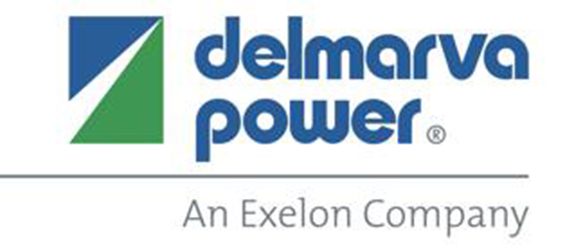


2020 Community Partnership Award Winners
